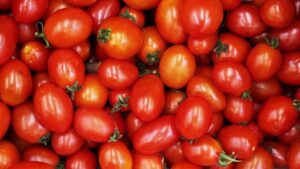Supporting the market dynamics are economic growth, potential for the agriculture sector, and input-output prices. The qualitative government policies in agricultural and economic contexts are needed to ensure food security and fight malnutrition. Access to markets, finance, improved targeting infrastructure investments, public-private collaboration, information availability and further services to African farmers are also key to address the need of the entire food value chain.

The pace and diversification of Africa’s food needs will require the region’s farmers to increase agricultural production and yields, which boost fertilizer demand. Fertilizer production on the continent has also been difficult due to costly raw materials importation.
To increase fertilizer consumption, the costs of fertilizers, among other factors, needs to come down substantially. Besides, the continent is subject to rapid population and income growth and changing food consumption habits. The region is expected to significantly increase demand for fertilizers over the next decade.
The Need to Feed Africa’s soils
Fertilizers come in diverse compounds and blends. Compounds are chemically processed to have all the specified units in one granule, while blends are a physical mixture of different minerals and nutrients in modified proportions. Blends tend to be cheaper but less consistent in quality.
Internationally, across all crops, farmers apply 135 kg of fertilizers per hectare of arable land, while in sub-Saharan Africa that figure is closer to 17 kg. Most soils in Africa are highly weathered and nutrient-poor. Soil fertility across much of Africa is low. Over 40% of African soils face nutrient depletion, partly because of a failure to apply sufficient levels of fertilizers.
While N is the most limiting nutrient for crop production, many agricultural soils in sub-Saharan Africa is deficient in P, K, sulphur (S) and micronutrients as well, which are critical for a balanced nutrient application. Industrial report indicated that African fertilizer industry shall have a CAGR of 2.7% over the forecast period of 2017-2022, as nutrient requirements and active ingredient usage are set to rise.
Read Also: Building Resilience Food Production System through Sustainable Agriculture in Namibia Cities
Fertilizer Production Hitches in Africa Fertilizers in Africa were so costly that the benefits of using them were overshadowed by their price tag. The Africa’s fertilizer constraints are strict production regulations, market development, technical and inadequate logistics road-map.
Fertilizers in Africa were so costly that the benefits of using them were overshadowed by their price tag. The Africa’s fertilizer constraints are strict production regulations, market development, technical and inadequate logistics road-map.
The fertilizer market development on the continent underscored that the policy environment in Africa remains uncertain, human capital is lacking certain expertise and skill sets, access to finance and market information is limited, and the enforcement of regulations is ineffective. A country like Tanzania requires three years of trials with the Tanzania Fertilizer Regulatory Authority before a firm can begin production. While trial periods are less in other parts of sub-Saharan Africa, they are usually ample enough to limit production.
While the technical obliges include poor knowledge of farmers in Africa regarding the correct use of agricultural inputs is affecting consumption growth. In a study focused on Nigeria, the World Bank found that reducing transportation costs by 50 percent would increase the number of plots with profitable fertilizer use by 40 percent; if costs fell by 75 percent, then the number of plots could increase by 60 percent. The most significant is rural road set-ups in Africa require urgent improvement which would ensure better distribution to more farmers and transportation cost reduction.
The Endless Opportunities
The challenges might seem substantial but given the intact nature of much of the African continent’s agricultural segment, so are the openings and possibilities of evolving a business case in Africa. Still, improved regional production could help address the concern of high fertilizer prices in sub-Saharan Africa, which uses considerably less fertilizer per hectare than the world average.
Sub-Saharan fertilizer production is expanding with Nigeria setting to more than triple urea capacity to 5.7m. tonnes by 2022. The region has potential to become a major fertilizer market due to the fact that Africa is endowed with mineral resources of the three major plant macronutrients; nitrogen (N), phosphate (P) and potash (K). Thus, Africa will be a key driver of future fertilizer growth, with sub-Saharan Africa consumption expected to increase 5% annually to reach 5.9m. tonnes nutrients in 2022, boosted by Nigeria and Ethiopia, and rising to represent 3% of the world global consumption.
Indigenous companies in Africa are starting to find more success in sourcing raw materials from within the continent. Businesses have been acquiring urea from natural gas reserves in Nigeria, Egypt, and most recently, Gabon. They are mining phosphate in Mali, Senegal, Togo, and soon Uganda. South Africa and Zimbabwe are manufacturing nitrates from ammonia sources available. These raw materials are creating possibilities for producing custom blends and compounds in the region. The current growth is mainly driven by higher application rates rather than increased cropland.
There are only few ammonium nitrate producers in Africa. The two countries that account for CA. Some 90% of Africa’s total ammonium nitrate production is South Africa and Egypt. The region is a net importer of ammonium nitrate (AN) and calcium ammonium nitrate (CAN) but an exporter of urea ammonium nitrate (UAN). Though, Ammonium nitrates demand in Africa comprises mainly of AN with a relatively small market for UAN and CAN. Africa consumes AN in both explosive grade (EGAN) and fertilizer grade (FGAN) applications.
Oyebamiji Adesoji Usman is passionate about Africa’s development. At Susa Africa, he writes on sustainable developments around Africa. Contact: Usmanoyebamiji75@gmail.com.
















Be First to Comment